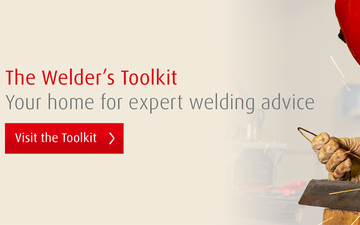- Official BOC UK Online | Industrial Gases | Products & Solutions | BOConline UK
-
Shop
- Industries
- Processes
- Gases & Equipment
-
Solutions
-
Services
-
Health & Safety
-
Contact & Support
- What's Happening
-
Net Zero Strategies
The Efficiency Series: Reduce costs by reducing your welding defects
Posted by BOC

When it comes to welding, dealing with defects and reworks can be one of the biggest challenges to productivity.
In this third blog in our Efficiency Series, we’re taking a look at improving your welds to improve your profitability.
The hidden cost of imperfect welds
Most welders will be familiar with weld imperfections – problems such as poor fusion, spatter, and porosity can all impact on the quality of a finished job.
Defects, and the time required to rework them, are a large ‘hidden’ cost that has as much of an impact on your bottom line as your consumables and equipment.
So how can you reduce them as much as possible? Here are some tips:
1. Keep your welding area clean and ensure components are free from contamination
One of the simplest – and most impactful – ways to reduce the potential for poor welds, is to keep on top of your cleaning.
Surface contamination such as moisture, rust, paint and oil will all cause problems with the deposited weld. Elbow grease doesn’t cost anything - ensuring components are contamination-free prior to welding is time well spent.
2. Adjust your welder settings and check your equipment
A little time spent fine-tuning your welding parameters to suit the job in-hand can pay dividends in terms of improving your deposited weld.
Make sure all your equipment is in good order:
- All electrical connections are tight
- No gas leaks are present
- Contact tips are in good condition and are the correct size
- Gas nozzles are spatter free
- Work return clamps are positioned correctly
- Filler wire is the correct grade/size and contamination free
- Tungsten electrodes are in good condition and ground to the correct point
- Consider swapping standard gas diffusers for gas lenses to improve gas coverage.
3. Check your technique
If you’re struggling to find the cause of your defects, a short re-training session might be in order. The wrong torch angle, inconsistent weld speed, and incorrect distance from your torch to workpiece can all result in rejects.
Before getting started, make sure you’re using the right technique for the job.
4. Choose the right shielding gas and gas flow rate
In our earlier Efficiency Series blog we looked at the productivity gains of choosing the right shielding gas and flow rate for your weld – and one of the biggest benefits is the potential to achieve better first-time results.
Aside from shielding your welds from contamination and oxidation from atmospheric gases, a good quality shielding gas that’s the right match for your job can improve your deposition rates as well as your fusion, weld penetration, corrosion resistance and appearance.
Ensure your flow rate is also correct, and you should see a rapid improvement in your weld quality.
Correct shielding gas flow rates are essential to ensure good quality completed welds.
Low flow rates can allow atmospheric contamination of the completed weld which can lead to defects such as oxidation, nitrogen absorption, gas pores etc.
High flow rates not only waste large amounts of gas but can also cause the same defects as those experienced by low flow rates due to turbulence in the gas shield.
What are the different types of shielding gas?
Though many welders turn to argon as a solid all-rounder, for some jobs there are more specific gas mixes that are a better fit for certain welds and materials.
Here’s a round-up:
Argon - an inert gas that can be used on its own for TIG welding virtually any material and MIG welding aluminium alloys, or as a base for almost all gas mixes.
Carbon dioxide (CO2) – stabilises the arc, increases heat transfer and improves the weld penetration profile. Higher levels of CO2 can help when welding dirty, rusty or primed materials, and when mixed with argon, can produce a better weld for stainless steel. Pure CO2 cannot be used for welding stainless steel.
Oxygen - cannot be used on its own as a shielding gas, but when mixed with argon will help to stabilise the arc. An argon/oxygen mix works well for welds on thin carbon steel, where appearance is a priority (such as for furniture). Argon/oxygen mixtures used to be the “gas of choice” for MAG welding stainless steels, but far better results are easily achievable by using argon/CO2 mixtures.
Nitrogen - is rarely used on its own for shielding, but can be suitable for root shielding applications, and is added to argon for TIG welding Duplex steels.
Helium - provides high thermal conductivity, broadens the weld pool and improves the penetration profile. Though it’s rarely used on its own, it will improve virtually all aspects of a deposited weld when mixed with argon, or in CO2/argon mixes.
Hydrogen - constricts or narrows the arc giving a much more concentrated ‘hot spot’, providing better deposition rates and reducing distortion. Can be mixed with argon for TIG welding austenitic stainless steel.
Are you using the right shielding gas for the job in hand? Check out our Welding Gas Finder and see.
If you’re struggling with welding defects, check out The Welder’s Toolkit. Your resource for detailed tips and advice from BOC’s welding experts.

